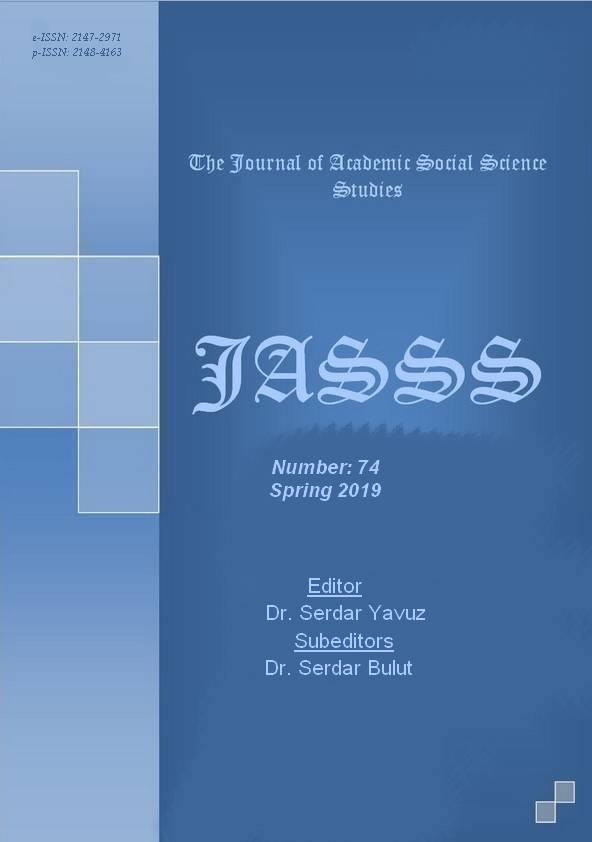Author :
Abstract
Duygu ve düşüncelerini doğaçlama olarak saz eşliğinde dile getiren ve sözlü geleneğin en önemli temsilcileri olan âşıklar, içinden çıktıkları yörenin halkına duygu ve düşünceleri ile tercüman olmakla birlikte halkın manevi değerlerini yansıttıkları deyişleriyle bulundukları yöreye mal olmuş birer dil ve kültür taşıyıcısı olarak önemli görev üstlenmektedirler. Bu âşıklardan biri de Doğu Anadolu âşıklık geleneğinde çok önemli yeri olan Çıldırlı Âşık Şenliktir. Yaşadığı yüzyıla damgasını vuran ve önemli bir halk âşığı olan Çıldırlı Âşık Şenlik’in deyişleri, içinde bulunulan çağın sosyal, siyasal ve toplumsal olaylarını inceden inceye işleyerek millî ve toplumsal bilincin birer değer taşı haline gelmiştir. Çoğu didaktik özellikte olan deyişler, içerisinde taşıdığı bilgi ve anlam yoğunluğunun yanı sıra sahibinin mensup bulunduğu yörenin ve halkın dilini yansıtma açısından da ayrıca ele alınmayı gerektirmektedir. Hiçbir âşık mensubu olduğu, doğup büyüdüğü topraklardan, bölgeden ve bölge halkının dilinden ayrı düşünülemez. Halk âşıklarının daha çok doğaçlama şekilde söyleyerek vücuda getirdikleri deyişlerinde ait oldukları yörenin ağız özelikleri tüm zenginliği ile yer bulmaktadır. Bu çalışmada sadece döneminde değil bugün de deyişleri dilden dile dolaşan usta bir halk âşığı ve aynı zamanda bir Karapapak/Terekeme Türkü olan Şenlik’in şiirlerinde görülen ve ağız özellikleri açısından önem taşıyan ünsüz benzeştirmeleri konusu ele alınmıştır. Şenlik’in şiirlerinde tespit edilen ünsüz benzeştirmeleri ses hususiyeti açısından ayrıntılı biçimde sınıflandırılarak verildikten sonra bu hususiyetlerin özellikle bazı yapım ve çekim eklerindeki durumu yine şiirlerden tespit edilen örneklerle ayrıntılı olarak verilmiştir.
Keywords
Abstract
Minstrels, who express their emotions and thoughts accompanied by their saz (a stringed instrument) and are the single most important representatives of the oral tradition, serve as interpreters of the people among whom they are a part of as well as reflecting their spiritual values through improvised tunes and playing a significant role both as the carriers of language and culture. One of these minstrels was Âşık Şenlik of Çıldır, who held an important place within the Eastern Anatolian minstrel tradition. As a lover of his people, his tunes, which were the hallmark of the century in which he lived, were deeply themed around the social, political, and societal events of that period, and thus became etched both in the consciousness of the nation and its people alike. Most of his tunes were didactic in nature, and in addition to being rich in knowledge and meaning, they must separately be addressed in terms of reflecting the language of the people and the region he belonged to nevertheless. No minstrel cannot be thought separate from their lands, region, and the local people. Their tunes, in which they sing in improvisation with the entire body, therefore, carry the all of the dialectal richness of that region. This study examines the consonant harmonies found in poetries of the minstrel Şenlik, being a Karapapak/Terekeme Turk, which only carry tremendous resonance from the past into the present, but also hold significance from dialectal features. Upon classifying the phonetic qualities of these harmonies determined in his poems in detail, the status of these matters especially in some derivational affixes and inflections is given through various examples determined in his poetry.





